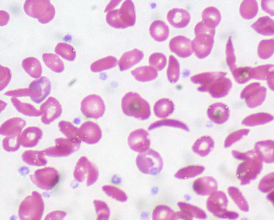September 10th, 2012 marks the 10th anniversary of the World Suicide Prevention Day, with the theme this year of ”Suicide Prevention across the Globe: Strengthening Protective Factors and Instilling Hope.”
Before we can prevent it, thought, we should probably know what it looks like.
So what do suicide rates look like around the world? Let’s take a tour through graphics.
Why not begin in the late 90s?
September 10th, 2012 marks the 10th anniversary of the World Suicide Prevention Day, with the theme this year of ”Suicide Prevention across the Globe: Strengthening Protective Factors and Instilling Hope.”
Before we can prevent it, thought, we should probably know what it looks like.
So what do suicide rates look like around the world? Let’s take a tour through graphics.
Why not begin in the late 90s?
The Anila Foundation brought down this graph from the United Nations, WHO, indicating a range of suicide rates that will be radically different 10 years later.

You probably don’t need me to point out that Japan is in the undesirable first place in this graph.
In 1998, 90 people a day committed suicide in Japan, a 34.7% increase from 1997.
32,863 people suicided in 1998, the largest number (and the highest rate) since police began keeping records in 1947, according to the New York Times.
Although depression is always one of the major causes of suicide, the question arises as to why Japan should had the highest rates in the late 90s.
Experts had a couple of theories.
Japan’s recession, and the layoffs–with their accompanying shame and stress–spiked the numbers, they believe.
This economic theory of suicide causality is supported by Chang et al, 2009, as depicted in their graph below.
A fascinating set of visuals, that makes a powerful argument, to be sure.
But Japanese suicide had something else on its side. It simply has traditionally not carried the stigma it does in Western societies–suicides are often depicted in literature and history as noble, and that consciousness permeates even today.
So it’s no surprise that rates would be lower in the U.S. in comparison. And in fact, in 1997, the rate of suicide in the U.S. was 11.4 per 100,000 according to the Centers for Disease Control and Prevention, versus 19.3 in Japan. (I know–you want to know why that isn’t the number reflected on the bar chart. I do, too, frankly. My best guess? Rates either rose in the two years following, or the WHO uses different statistics. Very illuminating, I’m sure.)
In 2001, Australia, who had the third highest rate in 1999, lost 2454 to suicide, more than road accident deaths, at 1736.
Truthfully, Australia’s third place score was a bit of a conundrum.
As the Anila Foundation aptly points out, “Climate, social attitudes and religion are known factors. Australia’s climate is on a par with Mediterranean countries like Italy, Spain and Greece, which all have very low (favourable) rates compared to Australia. Australia has a better climate than the United Kingdom, and a similar Anglo Saxon dominated culture; yet the UK has half the suicide rate of Australia.”
Perhaps the country took a good, hard look at its statistics and did some work in the area, for by the next graph, in 2006, its rate relative to the average OECD rate has dropped, and it had begun to close the gap between itself and the UK.
And, ok, I skipped France. Their rates remain high on almost all scales throughout the decade.
The country seems to have been in some sort of a rut. One in ten French take antidepressants. Two-fifths of the French suffer from serious depression sometime during their life. Those numbers alone are enough to account for high suicide rates, before we enter into a discussion of politics as part of the cause, which could be quite annoying.
It is what it is.
Moving on. . .to 2006.
This graph ran in the New York Times, based on data released by the OECD (Organisation [yes, that is how they spell it, no matter what my autocorrect might think] for Economic Co-operation and Development).
Of note? The Greeks come in with the winning score, with the lowest annual rate of only 2.9 out of every 100,000 people committing suicide. Perhaps it’s the feta cheese.
About 10 out of every 100,000 Americans were found to commit suicide yearly in this survey.
That is slightly lower than the average rate for all the member countries for which data are available, and about half the rates in Hungary and South Korea.
Note that (South) Korea is up there towards the high end of the chart, having replaced Japan and France as ‘top-scorers.’ We’ll come back to that.
Moving on to 2009, and a color-coded map, for the true visual learner.
GIven that red isn’t good, it’s rather alarming to see it clustered in one (granted, very large) geographic area, as it is. Europe and significant parts of Asia seem to have the highest suicide rates, as we’ve seen.
As the map illustrates, too, the countries of the former Soviet Union struggle more with suicide than, say, the countries in Africa. Stephen J. Dubner, of Freakonomics fame, gathered the statistics: Lithuania (42 suicides per 100,000), Russia (38), Belarus (35), Kazakhstan (28), and the Ukraine (26). An older country, but one that’s had its fair share of time spent being run by the Soviets, Hungary has a fairly high rate also, at 27 per 100,000.
One might hypothesize that in these cases it also correlates with economic desolation, although that should–in theory– be improving with time.
For the northernmost countries, a number of people have theorized that it’s the long, cold, dark winters that lead people to despair and to taking their own lives. However a paper entitled Dark Contrasts: The Paradox of High Rates of Suicide in Happy Places, published in the Journal of Economic Behavior and Organization noted that, in the U.S., Hawaii with its vibrant sun actually has the fifth highest state suicide rate, while New Jersey, certainly winning no awards in the weather department, has the lowest suicide rate nationally.
In a statement that so typifies what I love about sociological research, Laura Stoll, researcher at the New Economics Foundation’s Centre for Well-being, illuminates the situation thus: “. . .[W]hy is it higher in some places than others? The truth is that we really don’t know.”
Moving on.
India, not one of the OECD countries but represented on the map, by 2007 had a growing suicide problem as well. From 1990 to 2010 the suicide rate increased from o 7.9 to 10.3 per 100,000, which puts it slightly above the average world rate.
An Indian blogger points out that some of the reasons are apparent in this graph, which breaks down percents by region.
She suggests that it is “Globalisation, industrialisation and affluence” which have pushed the rate up, and, in support of her point, it is mostly the more developed states that have higher rates.
However, India’s suicide percentages really don’t hold a candle to those of other developed countries.
Which brings as back, as promised, to Korea.
So below we have the chart for the OECD from 2009.
With a 24.3 suicides for every 1000,000 people, South Korea heads up the countries on the suicide list in major OECD countries. It has the highest rate among all 30 OECD countries.
Note that that number is nearly double the rate in France, over 4 times that in the U.S., and nearly 5 times that in Britain.
A class website from Mt. Holyoke quoted a poll from The Korea Youth Counseling Institute that found that six in every 10 South Korean teenagers have thought about taking their own lives at least once, and of 4,7000 middle and high school students, 58.8% had considered suicide, 11.1% had attempted it.
As of 2011, over 40 Koreans a day took their own lives.
And, for those under 40? Suicide is the leading cause of death.
Note that the World Health Organization‘s bar chart, which shows the recent steep increase in suicides from 2005 to 2009 in South Korea, also actually has a higher number–31 suicide deaths per 100,000.
And of interest, particularly given that the U.S. scores fairly low on this chart, is the fact that for 2009, in the U.S., despite all beliefs and myths to the contrary, suicide was twice as common as homicide. In that year, there were approximately 36,500 suicides, and nd roughly 16,500 homicides. I can only imagine the ratio for Korea, a country with a much lower homicide rate than the U.S.
Just as a parting visual shot, here are some suicide statistics for the U.S. over time from the CDC.
Of note, as per our last post, is the relatively high-and increasing-rates of suicide among the older people–and the graph doesn’t even touch on the groups with the highest rates, those 65 and older, surpassed only by those 85+. Black women have the lowest suicide rate of any demographic group in the country. Military suicides are up to almost one a day.
In short, there is much work to be done for World Suicide Prevention Day–and beyond.
And, just to be safe, best to do it from New Jersey.
Related articles
- Suicide in the Elderly: A Story in Statistics (in time for World Suicide Prevention Day) (candidaabrahamson.wordpress.com)
- Two local events will mark World Suicide Prevention Day (insidehalton.com)













